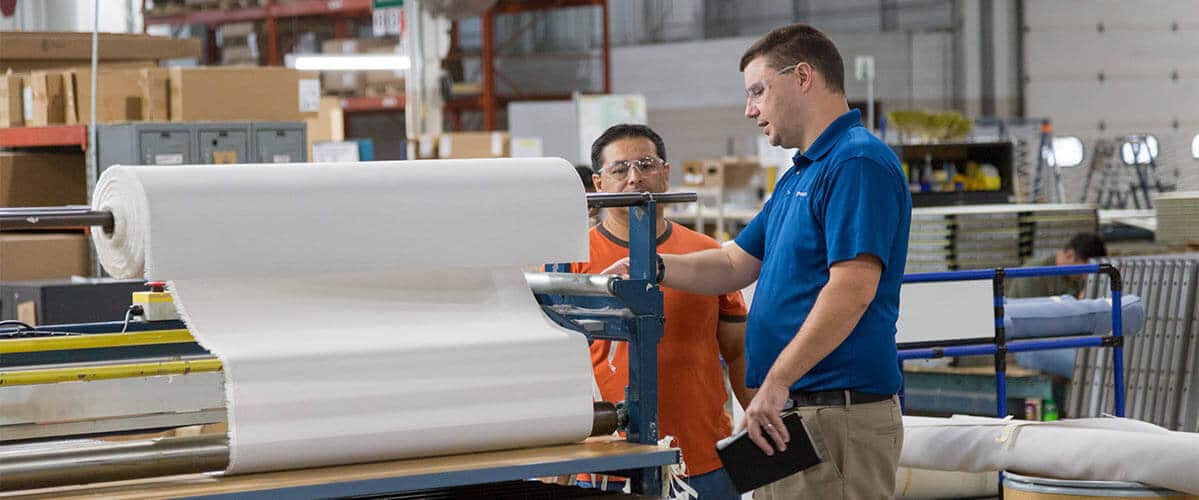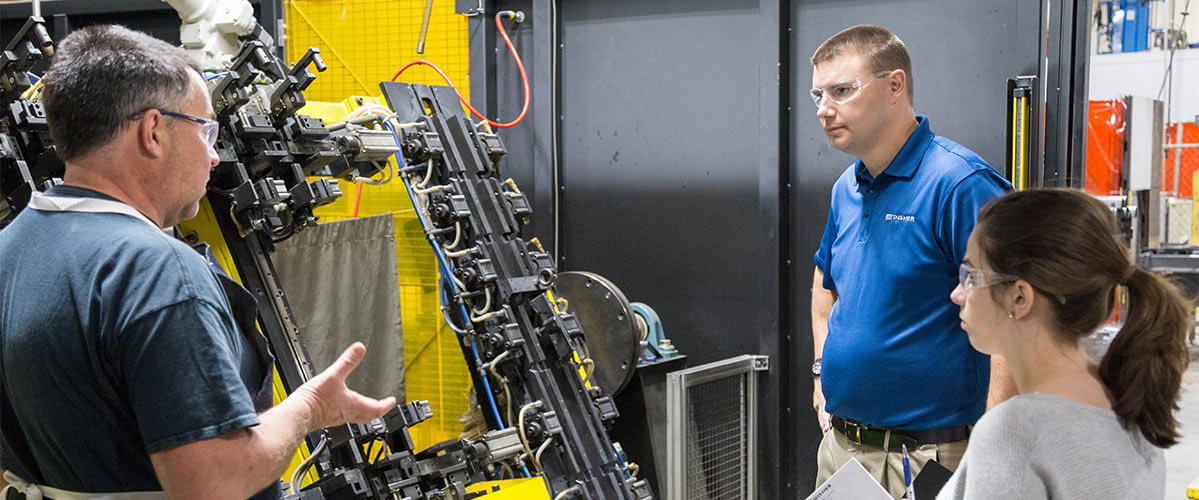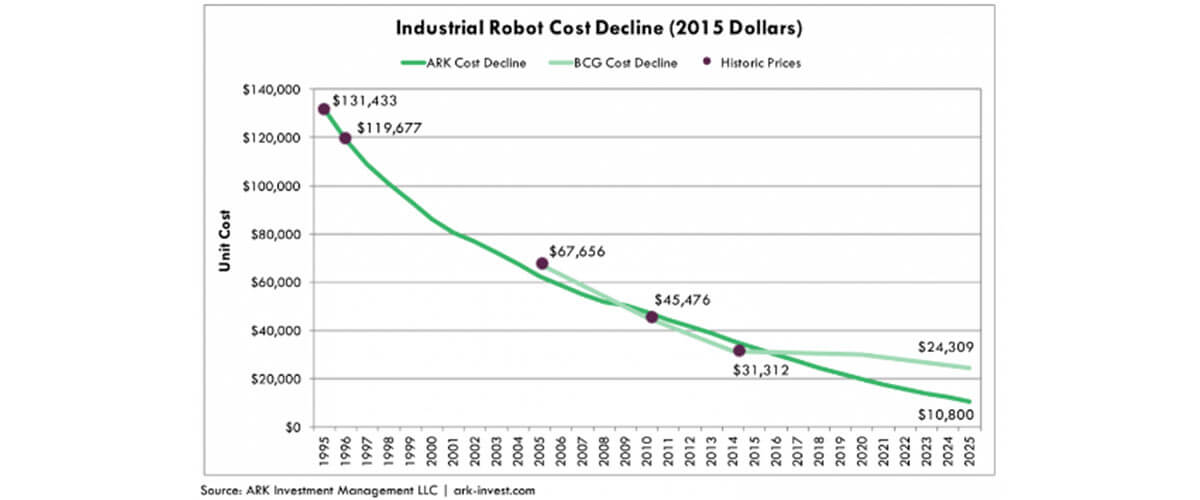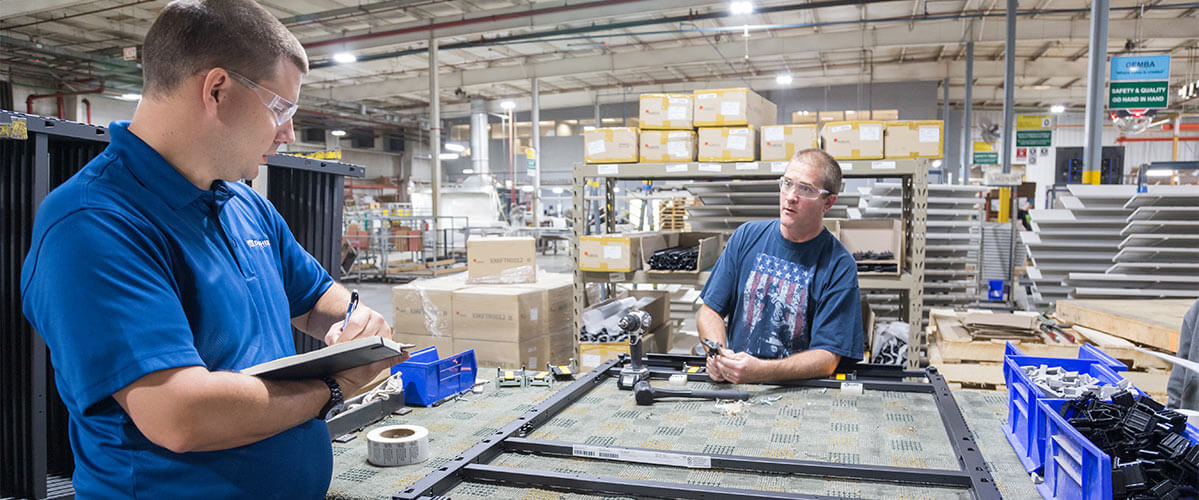Automation Is Not the End Goal— but Increased Productivity
March 29, 2018

Written By:
Joe Dyer | President

I am passionate about manufacturing and helping my customers thrive. One pressing concern they all share is how to boost productivity with fewer workers. To stay competitive, they understand that improvements must be made to grow the bottom line. Manufacturing leaders are looking for fresh ideas and new perspectives, but often lack the time and resources to bring about change. In this blog, I will review a great history lesson, discuss our current automation landscape, and introduce an effective approach to enhancing productivity whether it be with one product line, one workstation, or an entire plant.
An Automation History Lesson
In the ethos of 1950s America, the future of automation was right around the corner. Everywhere you looked you could see the influence of the new nuclear age. Robots, futuristic homes, and science fiction gripped the public imagination. If the 1950s created the vision, then the 1980s promised to be the fulfilment of it. Microchip technology had advanced far enough to create affordable computing technology and some of the ideas that the 1950s fashioned were anticipated to come to fruition in the Reagan Era. This played out in the automotive world as well. Robotic automation and lights-out factories seemed right around the corner. Or so thought Roger Smith.
Smith was the CEO for GM for most of the 1980s. With an MBA from Michigan, he was groomed to become the CEO from the ranks of finance. However, it was a tumultuous time to become the head of an American automaker, especially with the amount of capital and market share GM had at the time. In the early 1980s after the gas and oil crisis, Americans began considering smaller, more fuel-efficient foreign cars. Those cars came largely from automakers such as Toyota, Honda, and BMW who grew in American market share. Smith responded foolhardily by investing over $90 billion into futuristic automation efforts including guided vehicles, robots, and automated lines. The result? The automation of existing waste in the assembly processes. Even when Smith did a joint venture with Toyota at NUMMI, which had success in training and execution of lean principles, it was not effectively rolled out to other GM plants. Ultimately Smith was considered one of the worst CEOs in history. Why? He did not approach the problems of quality, productivity, and increased output by looking at waste reduction. Instead, he invested heavily in automating those wastes.
Now in the second decade of the new millennium we are at another crossroads. The economic busts during the early and late 2000s have also created doubts about the long-term future and pushed us to ask the question: Will automation of our business and manufacturing processes truly return our investment?
Enter the Automation Landscape
I recently gave the keynote presentation for a webinar, The Automation Landscape. The webinar was organized by MMTC-West / The Right Place and MiBiz. (As a side note, MMTC-West is a great organization to partner with to learn and grow as leaders in manufacturing.) We talked extensively about the current state of automation especially as it relates to those just getting started. We challenged the listeners to learn the lingo, train their teams, network, ruthlessly reduce waste, improve productivity, invest with wisdom, be creative, and become holistic change agents. View and listen to the one-hour webinar.
This conversation was spurred on by a number of factors. First, the cost of automation technologies has gone down almost ten-fold since the 1990s. A robot in Roger Smith’s factories might have been a $300k investment. Today, it could be as low as $30k.
The state of US manufacturing is also shifting. Not only is factory growth near a three-year high but change itself is happening faster. One example of this is Tesla’s Gigafactory which is already producing the most batteries of any factory in the world and only began production about one year ago.
Finally, without having to cite any statistics at all, we all know the healthy state of the US economy has put a strain on finding talented, skilled workers in every field. This is especially true in the Midwest and is the number one issue I see in working with our clients.
These are the challenges we all face, especially manufacturers in West Michigan. How do we approach and address these challenges? At DISHER, we have the opportunity to work with many manufacturing organizations. These leaders have invested heavily in their business and communities and they are prepared to lead in the changing manufacturing landscape.
We have developed an approach alongside manufacturers who want to avoid the automation of waste and improve productivity for the future. It is called a Productivity Assessment (PA). DISHER’s PA is a systematic method focused on two foundational principles we highly value: Respect for People and Reducing Waste. Without a healthy respect for people, many improvement efforts will be met with friction and automation efforts in particular will create discord. In addition, if we do not lead with a focus on waste reduction, our efforts are not addressing the root cause of productivity restraints.
Improve Productivity with a Productivity Assessment
When DISHER developed our Productivity Assessment service, we asked the question, “What is the end goal of any manufacturer regardless of the process?” Of course, the answer is a resounding, “To improve productivity!” Automation is a key part of the answer but we must engage with automation at the right time for the right reasons. If we do not, we risk creating the automation of waste like GM did in the 1980s. Automation is not the end goal—increased productivity is the goal.
A Productivity Assessment allows manufacturers to engage with a team of two DISHER experts who have a diverse range of experience, knowledge, and skills including: lean, continuous improvement, manufacturing, quality, design, controls, and automation. DISHER brings the value of outside, fresh-eye expertise and a fast, efficient process that works. The PA-steps may vary depending on customer need and depth of study, but generally it follows the process below. The process is built for quick feedback and implementation to help manufacturers realize profitable results in short order.
1. Customer Self-Assessment. Before the event, DISHER provides a self-assessment questionnaire for the customer to complete about the manufacturing process in question. We also ask the customer to provide a Process Flow Diagram (PFD) or a value stream map for the target process. Examples of questions include:
+ What are your current pain points on productivity, quality (scrap/rework), safety, delivery in this area?
+ What operations within the area in question are repetitive, boring, or dangerous?
2. Review Self-Assessment and PFD. On the day of the PA, we visit the plant and sit down for a review of the self-assessment and process flow diagram. We ask targeted questions in this overview seeking to root cause and anticipate any issues.
3. Process Walk. We walk the path of the manufacturing process, take pictures, ask questions of everyone involved, and note observations of possible wastes or inefficiencies. We try to identify various types of wastes such as: correction, overproduction, overprocessing, transportation, inventory, motion, and waiting. Together, we look for opportunities where an automated solution or another process solution could add value.
4. Debrief and Next Steps. Our last step on the day of the event is to debrief our customer on our initial findings. Together, we determine the priority opportunities and talk through what the next steps might be.

+ Some of these recommendations might be as simple as creating more visual standard work or as complex as designing a six-axis robot dispense cell.
+ One differentiator for DISHER in this process is the ability to leverage our years of experience in cross-functional industries and deep playbook of lean and automated solutions. Often the most innovate idea for boosting productivity might be found in another industry altogether.
Using this approach, DISHER’s fresh-eyes and recommendations have created immediate payback for our customers. Many times, we are asked to help with the implementation of the ideas alongside our clients. These next steps might include TWI and Kata coaching, leadership coaching, manufacturing/quality engineering support, machine design, controls design, automation design, ergonomic improvements, plant or cell layout, or lean implementation.
The world has changed drastically since Roger Smith’s tenure at GM. We have the ability to share and collaborate as never before. Automation costs are dropping every day and the tools are easier to use than ever and yet. The tyranny of choice has never been more stifling. It has been said that the world is drowning in information but starving for wisdom. This has never been truer in the world of automation. By partnering together with our clients with wisdom and experience in tow, we are helping identify where they can improve productivity in today’s automation landscape.
If you are interested in a fresh approach to boosting your manufacturing productivity, contact the Manufacturing Tech team at DISHER. We would love to help you stay competitive with sound solutions for your future.
Written By: Joe Dyer | Team Lead – Manufacturing Tech Services
Joe enjoys coaching the Manufacturing Technology team and draws from a wide variety of work experience including manufacturing, quality systems, machining, and programming. Joe received an Aeronautical Engineering degree from Western Michigan University. Outside of work, he likes to spend time at home with his wife and two boys and leads various ministries at his church.





